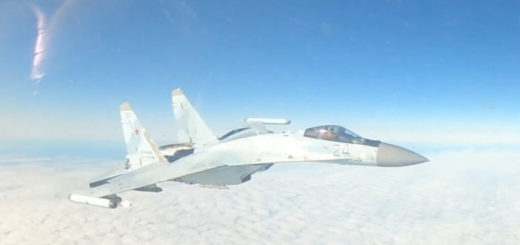French armed forces to acquire R2-600 drones from Fly-R to boost intelligence capability

{loadposition bannertop}
{loadposition sidebarpub}
According to information published by Fly-R on June 17, 2025, the French Defense Procurement Agency (DGA) has officially selected the R2-600 unmanned aerial vehicle (UAV), marking a strategic milestone in France’s pursuit of autonomous, high-endurance aerial surveillance capabilities. This decision comes after several years of research and development by Fly-R, a French aerospace innovator specializing in advanced aerodynamic platforms. The R2-600’s selection by the DGA not only confirms the technological validity of its hybrid propulsion and aerodynamic configuration but also positions Fly-R as a serious industrial player capable of delivering cutting-edge ISR (Intelligence, Surveillance, and Reconnaissance) platforms to national and international customers.Follow Army Recognition on Google News at this link
The R2-600 from Fly-R is a high-altitude long-endurance UAV with hybrid propulsion designed for ISR missions, offering over 20 hours of flight endurance and operational capability up to 13,700 m. (Picture source: Fly-R)
With a maximum takeoff weight of 1,700 kilograms, the R2-600 is engineered around a hybrid propulsion system that merges traditional combustion with electric technologies, delivering over 20 hours of continuous flight. This endurance is matched by a service ceiling of 45,000 feet, enabling the R2-600 to operate beyond the reach of most ground-based threats while maintaining persistent surveillance over wide areas. The aircraft’s advanced aerodynamic design, developed through years of iterative prototyping and simulation, ensures high efficiency and stability at altitude, particularly suited for maritime and border surveillance, signals intelligence (SIGINT), and critical infrastructure monitoring.
The DGA’s (French Defense Procurement Agency) decision to back the R2-600 underlines a broader strategic shift within the French defense establishment, emphasizing autonomy, technological sovereignty, and next-generation intelligence-gathering capabilities. The UAV’s hybrid system not only offers significant operational flexibility but also reduces logistical dependencies associated with conventional fuel-based systems, enhancing its deployability across expeditionary theaters. As France modernizes its ISR architecture, platforms like the R2-600 will play an increasingly central role in complementing satellite-based assets and manned patrol aircraft.
Fly-R’s success in this selection process also signals the growing maturity of France’s UAV ecosystem, historically dominated by larger entities. With the R2-600 now moving toward production and possible operational evaluation phases, Fly-R is expected to leverage this momentum to reinforce its international presence. Key industrial partnerships, both within Europe and beyond, are being cultivated to support scalable production, integration of modular sensor payloads, and data exploitation systems compatible with NATO-standard ISR networks.
The adoption of the R2-600 is likely to open the door to a new class of European-built HALE (High-Altitude Long Endurance) UAVs that could reduce dependency on non-European suppliers. As hybrid propulsion systems gain traction for their environmental and operational benefits, Fly-R’s technical approach combining endurance, altitude, and payload versatility could serve as a blueprint for future unmanned systems deployed in both military and civilian airspace.
For the French Armed Forces, the R2-600 represents a leap forward in ISR (Intelligence, Surveillance, and Reconnaissance) effectiveness, enabling persistent monitoring across strategic regions such as the Sahel, the Indo-Pacific maritime approaches, and European border zones. The DGA’s endorsement sets the stage for France to become a reference nation in advanced UAV deployment, shaping future doctrines of autonomous surveillance in complex threat environments.

{loadposition bannertop}
{loadposition sidebarpub}
According to information published by Fly-R on June 17, 2025, the French Defense Procurement Agency (DGA) has officially selected the R2-600 unmanned aerial vehicle (UAV), marking a strategic milestone in France’s pursuit of autonomous, high-endurance aerial surveillance capabilities. This decision comes after several years of research and development by Fly-R, a French aerospace innovator specializing in advanced aerodynamic platforms. The R2-600’s selection by the DGA not only confirms the technological validity of its hybrid propulsion and aerodynamic configuration but also positions Fly-R as a serious industrial player capable of delivering cutting-edge ISR (Intelligence, Surveillance, and Reconnaissance) platforms to national and international customers.
Follow Army Recognition on Google News at this link
The R2-600 from Fly-R is a high-altitude long-endurance UAV with hybrid propulsion designed for ISR missions, offering over 20 hours of flight endurance and operational capability up to 13,700 m. (Picture source: Fly-R)
With a maximum takeoff weight of 1,700 kilograms, the R2-600 is engineered around a hybrid propulsion system that merges traditional combustion with electric technologies, delivering over 20 hours of continuous flight. This endurance is matched by a service ceiling of 45,000 feet, enabling the R2-600 to operate beyond the reach of most ground-based threats while maintaining persistent surveillance over wide areas. The aircraft’s advanced aerodynamic design, developed through years of iterative prototyping and simulation, ensures high efficiency and stability at altitude, particularly suited for maritime and border surveillance, signals intelligence (SIGINT), and critical infrastructure monitoring.
The DGA’s (French Defense Procurement Agency) decision to back the R2-600 underlines a broader strategic shift within the French defense establishment, emphasizing autonomy, technological sovereignty, and next-generation intelligence-gathering capabilities. The UAV’s hybrid system not only offers significant operational flexibility but also reduces logistical dependencies associated with conventional fuel-based systems, enhancing its deployability across expeditionary theaters. As France modernizes its ISR architecture, platforms like the R2-600 will play an increasingly central role in complementing satellite-based assets and manned patrol aircraft.
Fly-R’s success in this selection process also signals the growing maturity of France’s UAV ecosystem, historically dominated by larger entities. With the R2-600 now moving toward production and possible operational evaluation phases, Fly-R is expected to leverage this momentum to reinforce its international presence. Key industrial partnerships, both within Europe and beyond, are being cultivated to support scalable production, integration of modular sensor payloads, and data exploitation systems compatible with NATO-standard ISR networks.
The adoption of the R2-600 is likely to open the door to a new class of European-built HALE (High-Altitude Long Endurance) UAVs that could reduce dependency on non-European suppliers. As hybrid propulsion systems gain traction for their environmental and operational benefits, Fly-R’s technical approach combining endurance, altitude, and payload versatility could serve as a blueprint for future unmanned systems deployed in both military and civilian airspace.
For the French Armed Forces, the R2-600 represents a leap forward in ISR (Intelligence, Surveillance, and Reconnaissance) effectiveness, enabling persistent monitoring across strategic regions such as the Sahel, the Indo-Pacific maritime approaches, and European border zones. The DGA’s endorsement sets the stage for France to become a reference nation in advanced UAV deployment, shaping future doctrines of autonomous surveillance in complex threat environments.






